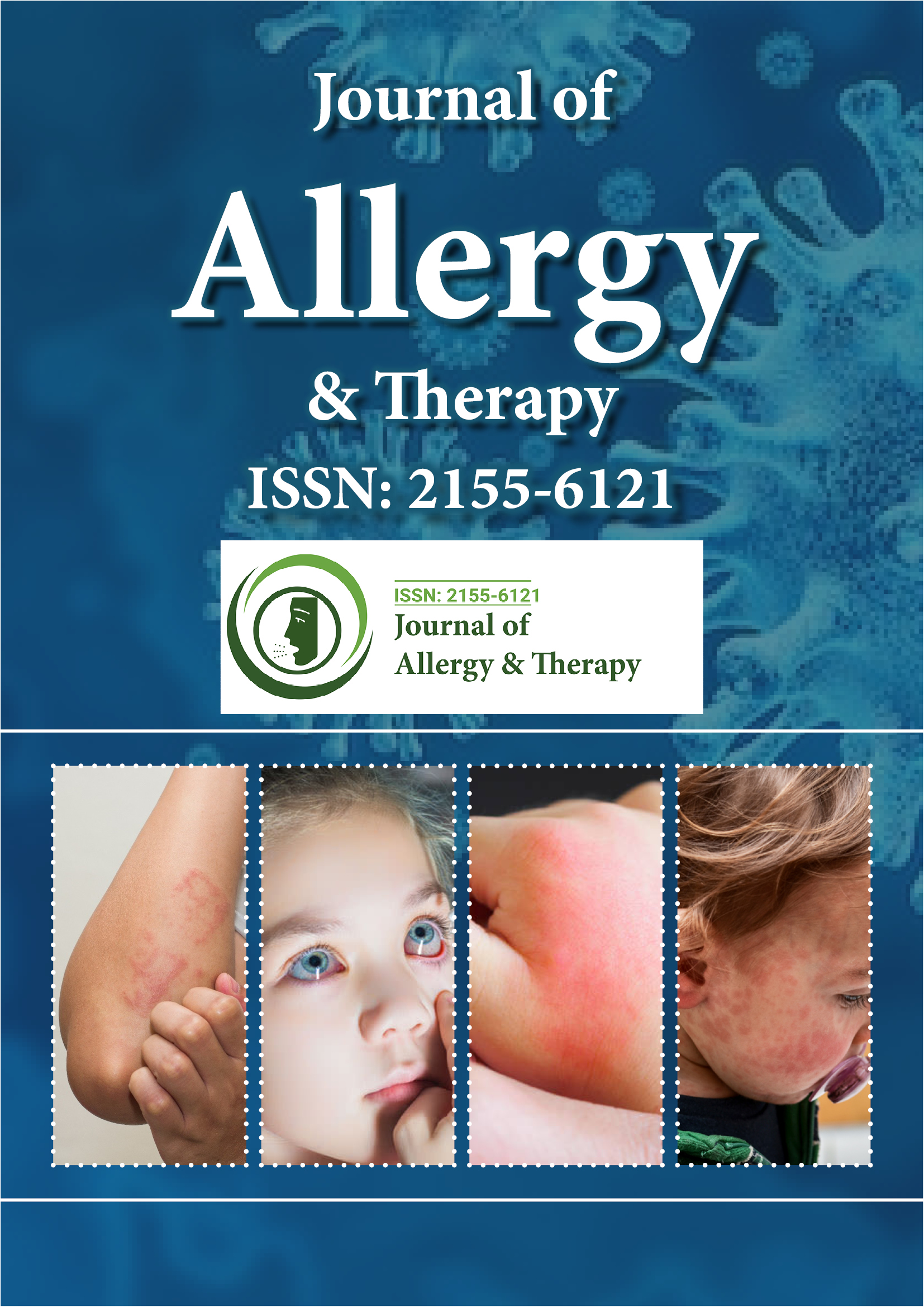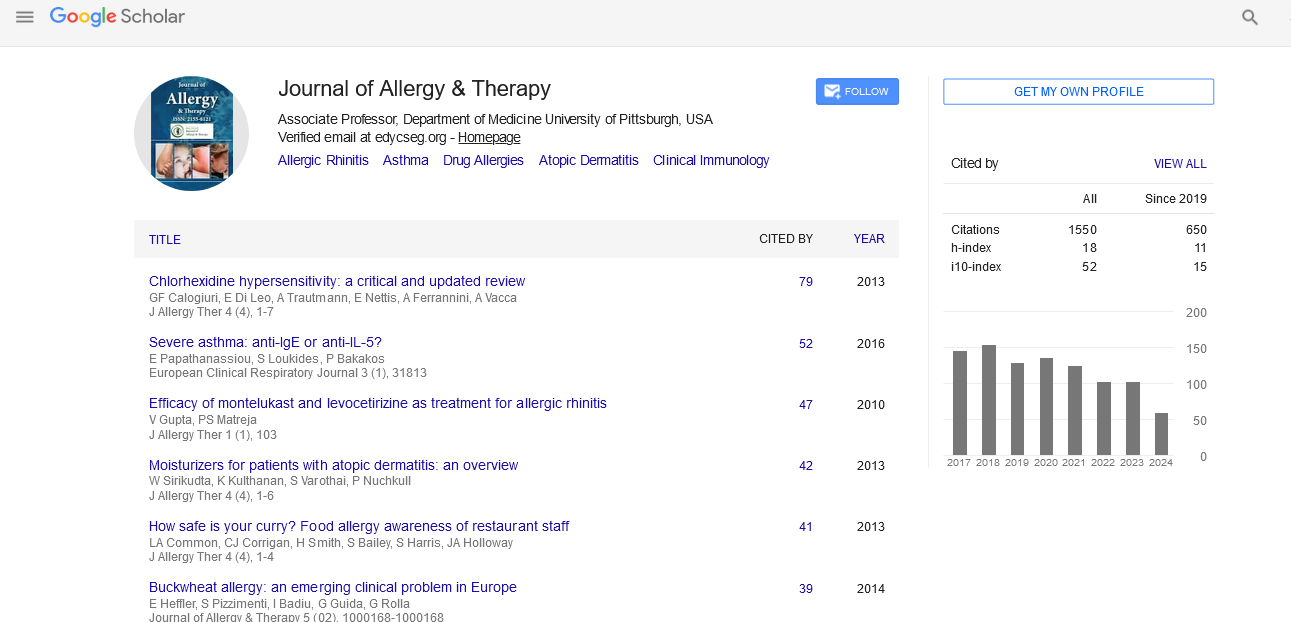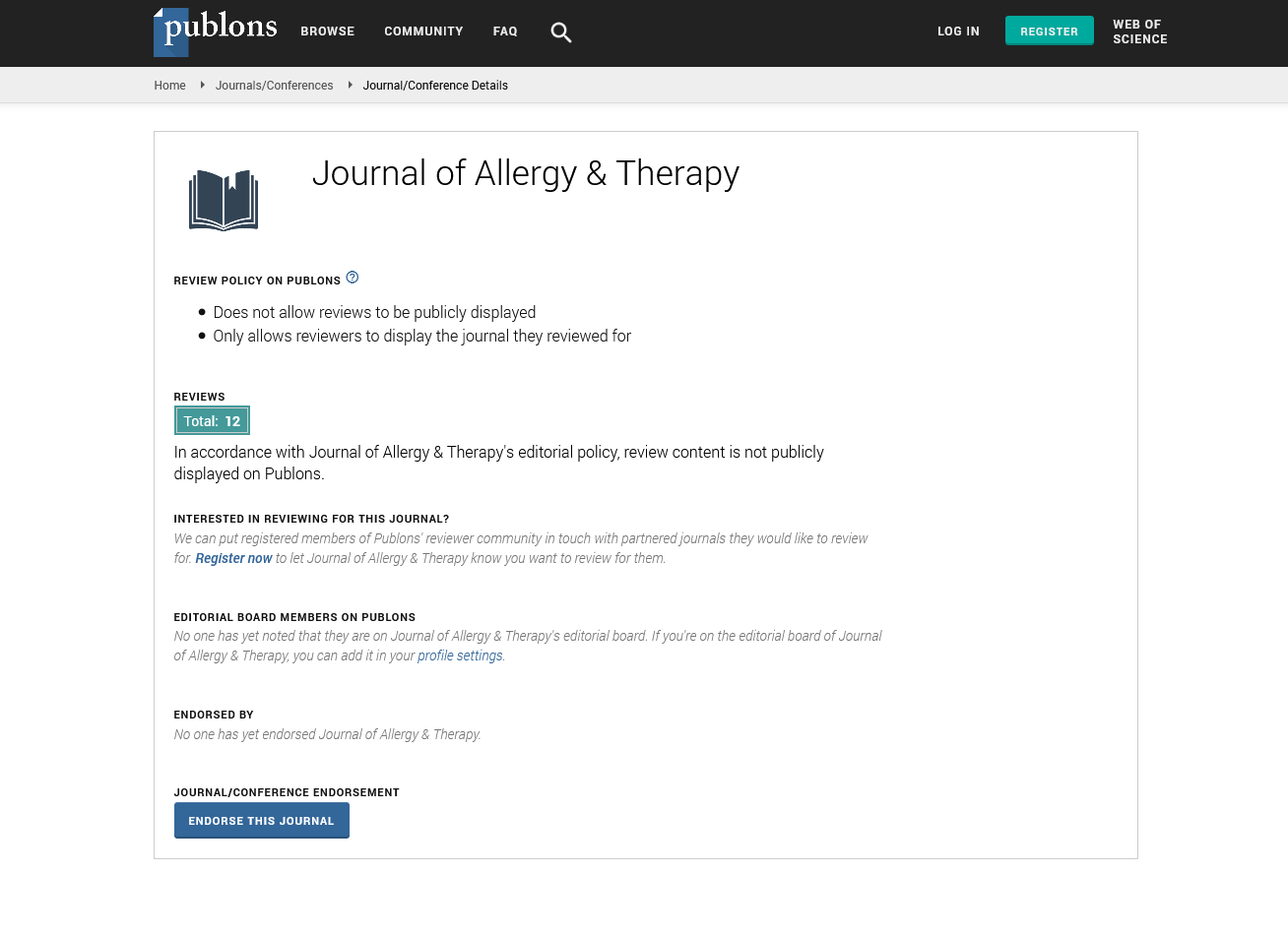PMC/PubMed Indexed Articles
Indexed In
- Academic Journals Database
- Open J Gate
- Genamics JournalSeek
- Academic Keys
- JournalTOCs
- China National Knowledge Infrastructure (CNKI)
- Ulrich's Periodicals Directory
- Electronic Journals Library
- RefSeek
- Hamdard University
- EBSCO A-Z
- OCLC- WorldCat
- SWB online catalog
- Virtual Library of Biology (vifabio)
- Publons
- Geneva Foundation for Medical Education and Research
- Euro Pub
- Google Scholar
Useful Links
Share This Page
Journal Flyer

Open Access Journals
- Agri and Aquaculture
- Biochemistry
- Bioinformatics & Systems Biology
- Business & Management
- Chemistry
- Clinical Sciences
- Engineering
- Food & Nutrition
- General Science
- Genetics & Molecular Biology
- Immunology & Microbiology
- Medical Sciences
- Neuroscience & Psychology
- Nursing & Health Care
- Pharmaceutical Sciences
Perspective - (2024) Volume 15, Issue 4
Cross-Cultural Perspectives in Allergy Management: A Global Health Analysis
Herbert Kopp*Received: 29-Nov-2024, Manuscript No. JAT-24-28028; Editor assigned: 02-Dec-2024, Pre QC No. JAT-24-28028 (PQ); Reviewed: 16-Dec-2024, QC No. JAT-24-28028; Revised: 23-Dec-2024, Manuscript No. JAT-24-28028 (R); Published: 30-Dec-2024, DOI: 10.35248/2155-6121.24.15.405
Description
Food allergies represent a complex global health phenomenon with significant variations across different cultural and geographical contexts. Modern immunological research increasingly recognizes the complex interactions between genetic predispositions, environmental factors and cultural dietary practices in understanding allergic responses. Genetic diversity plays an important role in determining allergic susceptibility across different populations. Studies demonstrate remarkable variations in immune system responses among different ethnic groups, highlighting the importance of culturally sensitive diagnostic and management approaches. For instance, East Asian populations exhibit distinct genetic markers associated with food allergies compared to European or African genetic profiles. Dietary patterns emerge as a critical factor in understanding cross-cultural allergic variations. Traditional food preparation methods, ingredient combinations and cultural nutritional practices significantly influence immune system development and allergic response mechanisms. Mediterranean dietary patterns, characterized by diverse plant-based foods and specific preparation techniques, demonstrate potential protective effects against certain allergic conditions.
Environmental interactions provide additional complexity to cross-cultural allergy management. Urban environments in developed nations show higher food allergy prevalence compared to rural agricultural communities. Industrialization, processed food consumption and reduced microbial exposure contribute to increased allergic sensitization across multiple cultural contexts. Diagnostic approaches vary significantly across different global healthcare systems. Western medical models emphasize molecular diagnostic techniques, while traditional medical systems in Asia and Africa incorporate comprehensive assessment methodologies. These diverse approaches highlight the need for comprehensive, culturally adaptive diagnostic frameworks that respect individual medical traditions. Technological innovations are gradually connecting crosscultural diagnostic gaps. Advanced computational algorithms and machine learning techniques enable more nuanced understanding of population-specific allergic mechanisms.
Immunological research reveals interesting insights into population-specific immune system variations. Genetic studies demonstrate that certain populations possess unique immune system adaptations related to historical dietary practices. For example, populations with long-standing dairy consumption histories exhibit different lactose tolerance and immune response patterns. Economic considerations significantly impact cross-cultural allergy management strategies. Developed nations invest substantially in advanced diagnostic technologies and comprehensive management protocols, while developing countries face challenges in implementing sophisticated intervention approaches. These economic disparities create complex global health challenges. Public health policies play a critical role in addressing cross-cultural allergy management. International collaborative research initiatives are essential in developing comprehensive, adaptable diagnostic and intervention strategies. These efforts require nuanced understanding of cultural, genetic and environmental variations. Pediatric populations represent a particularly important research domain in cross-cultural allergy investigations. Early-life dietary exposures, breastfeeding practices and cultural nutritional traditions significantly influence immune system development. Comparative studies across different global populations provide unprecedented insights into allergic mechanism variations. Emerging research demonstrates the potential of personalized, culturally sensitive intervention strategies. By integrating advanced diagnostic technologies with comprehensive cultural understanding, healthcare professionals can develop more effective, patient-centered management approaches.
Technological innovations continue expanding our understanding of cross-cultural immunological variations. Advanced genetic sequencing, computational analysis and interdisciplinary research methodologies enable more comprehensive exploration of population-specific allergic mechanisms. Global collaborative research initiatives emerge as critical in addressing cross-cultural allergy challenges.
Interdisciplinary teams combining immunologists, geneticists, nutritionists and cultural health experts can develop more comprehensive, nuanced understanding of allergic variations. These collaborative approaches transcend traditional research boundaries. Ethical considerations remain paramount in developing cross-cultural allergy management strategies. Researchers must navigate complex cultural sensitivities, respect individual medical traditions and develop inclusive, adaptive diagnostic and intervention approaches. Transparent, collaborative research methodologies become essential in this global health context.
In conclusion, cultural perspectives in allergy management represent a complex, dynamic field requiring comprehensive, adaptive approaches. By recognizing genetic, environmental and cultural variations, researchers can develop more precise, personalized intervention strategies. Continued interdisciplinary research, technological innovation and global collaboration will drive future advancements in understanding human immunological diversity. Future research must continue exploring the complex interactions between cultural practices, genetic predispositions and immunological mechanisms to develop more comprehensive, patient-centered allergy management approaches.
Citation: Kopp H (2024). Cultural Perspectives in Allergy Management: A Global Health Analysis. J Allergy Ther. 15:405.
Copyright: © 2024 Kopp H. This is an open access article distributed under the terms of the Creative Commons Attribution License, which permits unrestricted use, distribution, and reproduction in any medium, provided the original author and source are credited.


